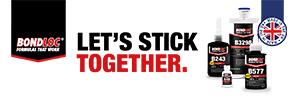~ Pharma practices are increasing in tobacco product manufacturing ~
As the regulatory landscape for tobacco products continues to evolve, the Tobacco Product Manufacturing Practice (TPMP) introduces pharmaceutical-style quality standards into the industry. This recent shift signals a significant transformation in how tobacco products are developed, manufactured and tested, aligning more closely with the rigorous practices long established in the pharmaceutical sector. Here, UK-based testing and regulatory consultancy, Broughton, explores the key similarities between tobacco and pharmaceutical regulations.
With big tobacco increasingly adopting pharmaceutical methodologies, the crossover between these two industries is growing, presenting opportunities for improved product safety, quality control and regulatory compliance.
The growing convergence
The Premarket Tobacco Product Application (PMTA) process, which governs the authorisation of new tobacco products, closely mirrors pharmaceutical product development. Both undergo rigorous evaluation for safety, consistency and compliance through comprehensive risk assessments.
These commonalities extend to product design, manufacturing controls, quality control methods and stability testing, which are all essential components in ensuring product safety and efficacy.
Product performance data in PMTA submissions typically includes stability and shelf-life testing as well as extractables and leachables studies. These are key considerations in pharmaceutical stability assessments, helping to ensure that a product remains safe and effective throughout its intended shelf life.
Why it matters
Pharmaceutical-grade standards in manufacturing, quality control and clinical testing provide a well-established framework for product safety and consistency. To comply with TPMP, adopting these principles will offer significant benefits.
More rigorous quality control measures will reduce variability and contamination risks. Aligning with pharmaceutical standards will help streamline regulatory approval. Companies that integrate pharma-grade processes will be better positioned as leaders in safety and reliability.
Clinical studies in tobacco regulation tend to be less expensive than in pharmaceuticals but follow similar principles in design, execution and data interpretation. This further reinforces the alignment between the two industries and highlights how applying pharmaceutical best practices can improve efficiency without significantly increasing costs.
One crucial area where pharmaceutical expertise can streamline TPMP compliance is in stability studies. In pharma, bridging stability studies are often used to save time and costs while maintaining regulatory integrity.
However, simply following pharmaceutical guidelines, such as ICH stability testing protocols, is not enough. Companies will need to demonstrate to the FDA why their study design is appropriate, how it aligns with regulatory expectations and how it ensures product consistency over time.
A difference between TPMP and pharmaceutical requirements is the justification of specifications. Pharmaceuticals require strict limits to ensure efficacy and safety, as even small variations can be critical. In contrast, tobacco products allow broader specifications since slight nicotine variations do not pose an immediate health risk. This flexibility makes TPMP less stringent in certain areas compared to pharma regulations.

Common practices in tobacco and pharma
As the tobacco industry integrates higher standards, its practices increasingly align with those of the pharmaceutical sector. While they remain distinct industries, their shared commitment to quality and compliance continues to grow.
The transition to TPMP will require investment in infrastructure, expertise, and regulatory adherence. However, the long-term benefits, enhanced product quality, greater consumer trust, and smoother regulatory pathways, far outweigh the challenges.
For companies looking to navigate this evolving landscape, partnering with stability experts who understand both tobacco and pharmaceutical regulations will be essential. By applying proven methodologies from pharma, tobacco manufacturers can future proof their products and stay ahead in a highly regulated market.
Partner with Broughton’s regulatory experts now to future-proof your products and stay ahead in this evolving market. Navigate change with confidence and secure your future success.








